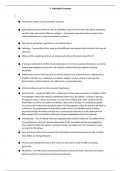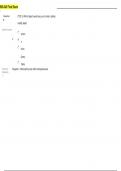Notas de lectura
haemolytic anaemia
- Grado
- Institución
preview:● We have extravascular and intravascular haemolysis. ● Extravascular – maybe the RBCs have a deformity in their shape and what can happen is that macrophages within the reticular endothelial system (e.g. the spleen), as blood is passing through the spleen, realise that those red cel...
[Mostrar más]





